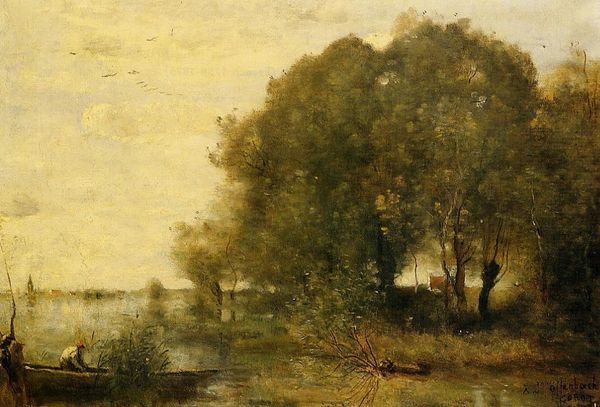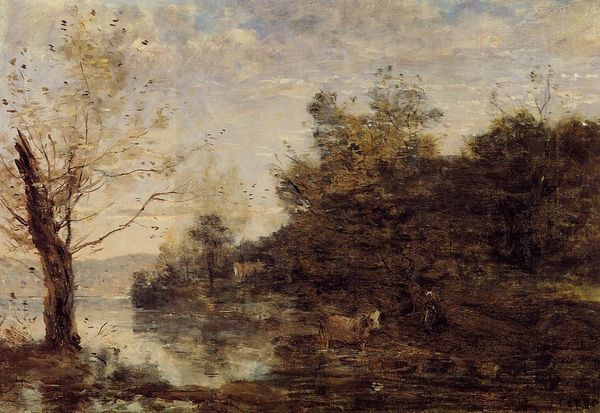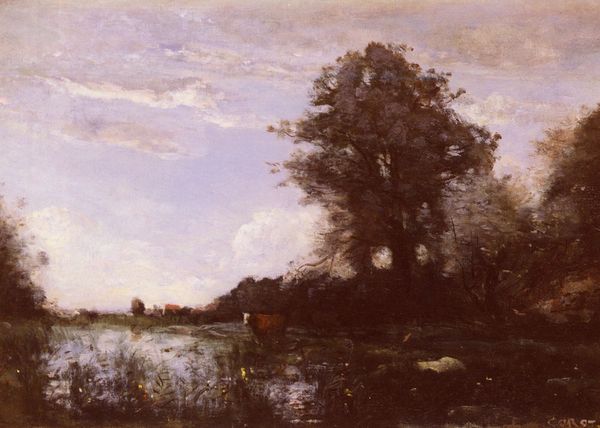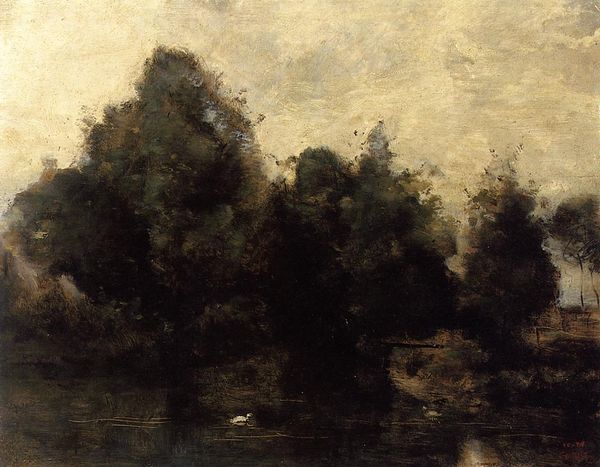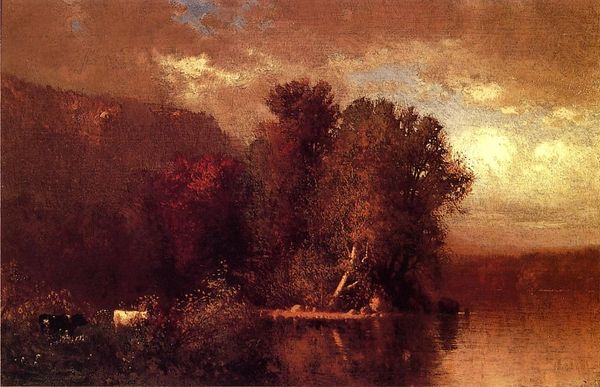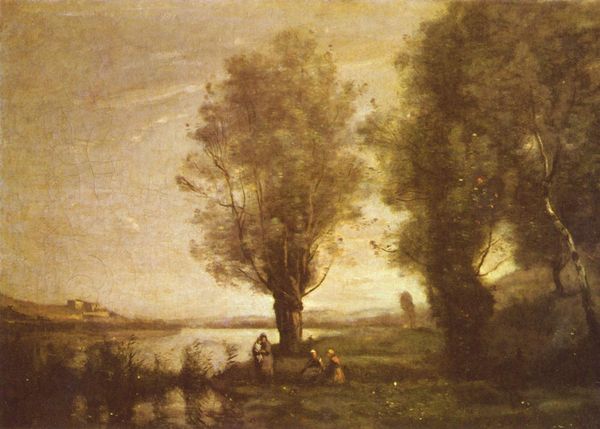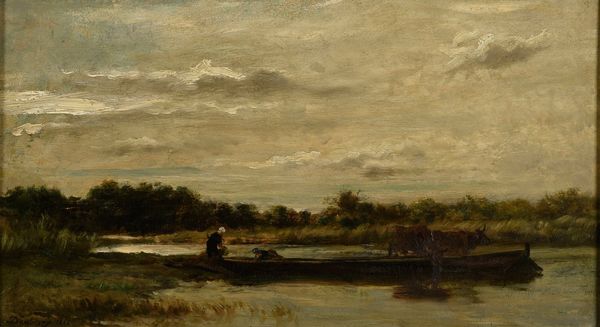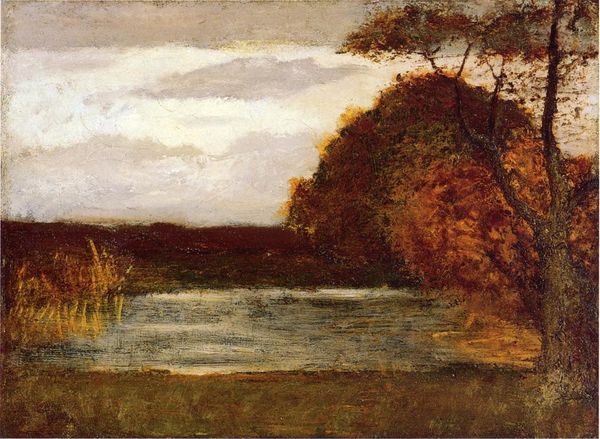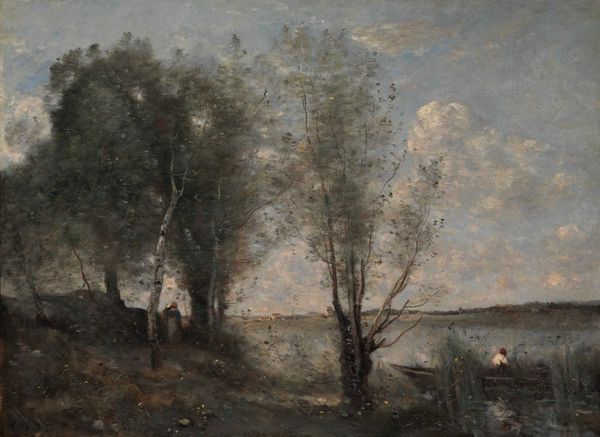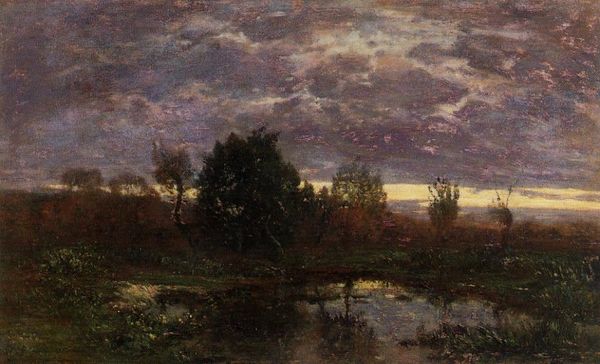
Copyright: Public domain
Curator: Let's turn our attention to Camille Corot's "Fisherman Boating along a Wooded Landscape," created around 1860. What strikes you first about this scene? Editor: The overwhelming stillness. There's something heavy about the light, or rather, the lack of it. It feels… pre-storm. Like a scene paused mid-breath, heavy with humidity and a bit of impending doom. Curator: I can see that. The palette is subdued, almost monochromatic, emphasizing the soft, hazy atmosphere. Corot was a master of capturing those fleeting moments of light, that liminal space between day and night. What about the materiality itself? Does the evidence of labor speak to you? Editor: Absolutely. Look at the textured application of paint. You can see the artist’s hand building up layers, almost sculpting the forms of the trees and the water. The way the pigment’s worked, thin washes overlaid with impasto, shows a clear understanding of how different viscosities behave. I wonder where he would have sourced such supplies back in the day. Curator: Indeed. Corot often painted en plein air, taking his easel and paints directly into the landscape. He sought to capture the direct sensory experience of nature, something the Salon painters working in studios simply couldn't achieve. It’s thought that Corot built the landscape in his studio later on by reproducing images and memory into the scene that already existed on canvas. Editor: That almost romantic approach to artistic production clashes a little with the realities of being a 19th-century artist, don’t you think? The social pressures and marketplace demands for such art... the fishing as work and leisure contrast. Was he truly free or driven by material circumstance? Curator: A perpetual question for any artist, I imagine. Yet, beyond the technical aspects, I find a profound sense of tranquility. That lone figure in the boat, the placid water… there’s a timeless quality that transcends any specific social or historical context. He captures the very essence of quietude, doesn't he? Editor: Yes, there is that quietude. It is compelling... For me it still whispers more about the weight of production, what materials were used and from whom they were resourced, but ultimately, I can find space for Corot's romantic lens to take its shot. Curator: A perfect place to leave the conversation; from brushstrokes to materials to that moment of tranquility. A world captured.
Comments
No comments
Be the first to comment and join the conversation on the ultimate creative platform.
